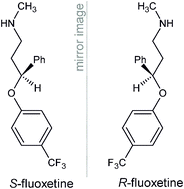Pharmacologically active compounds in the environment and their chirality
Abstract
Pharmacologically active compounds including both legally used pharmaceuticals and illicit drugs are potent environmental contaminants. Extensive research has been undertaken over the recent years to understand their environmental fate and toxicity. The one very important phenomenon that has been overlooked by environmental researchers studying the fate of pharmacologically active compounds in the environment is their chirality. Chiral drugs can exist in the form of enantiomers, which have similar physicochemical properties but differ in their biological properties such as distribution, metabolism and excretion, as these processes (due to stereospecific interactions of enantiomers with biological systems) usually favour one enantiomer over the other. Additionally, due to different pharmacological activity, enantiomers of chiral drugs can differ in toxicity. Furthermore, degradation of chiral drugs during wastewater treatment and in the environment can be stereoselective and can lead to chiral products of varied toxicity. The distribution of different enantiomers of the same chiral drug in the aquatic environment and biota can also be stereoselective. Biological processes can lead to stereoselective enrichment or depletion of the enantiomeric composition of chiral drugs. As a result the very same drug might reveal different activity and toxicity and this will depend on its origin and exposure to several factors governing its fate in the environment. In this critical review a discussion of the importance of chirality of pharmacologically active compounds in the environmental context is undertaken and suggestions for directions in further research are made. Several groups of chiral drugs of major environmental relevance are discussed and their pharmacological action and disposition in the body is also outlined as it is a key factor in developing a full understanding of their environmental occurrence, fate and toxicity. This review will be of interest to environmental scientists, especially those interested in issues associated with environmental contamination with pharmacologically active compounds and chiral pollutants. As the review will outline current state of knowledge on chiral drugs, it will be of value to anyone interested in the phenomenon of chirality, chiral drugs, their stereoselective disposition in the body and environmental fate (212 references).


 Please wait while we load your content...
Please wait while we load your content...